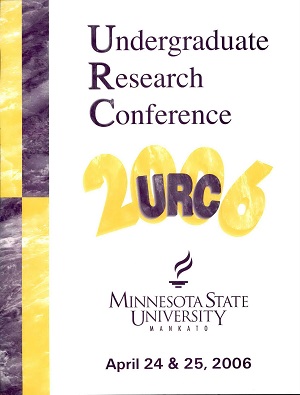Simple and Effective Removal of Organotin Compounds from Reaction Products
Location
CSU North Ballroom
Start Date
25-4-2006 10:00 AM
End Date
25-4-2006 12:00 PM
Student's Major
Chemistry and Geology
Student's College
Science, Engineering and Technology
Mentor's Name
Brian L. Groh
Mentor's Department
Chemistry and Geology
Mentor's College
Science, Engineering and Technology
Description
Organotins have found widespread use in organic synthesis and the growth of their use will likely continue. Despite their popularity, reactions utilizing organotins nearly all suffer from the unfortunate formation of triorganotin halides or pseudo-halides as by-products that must be separated from reaction products often in stoichiometric amounts. In response to this problem there have been a variety of methods developed to separate organotin halides from the desired products though most are not general, mild, or cost effective. This report describes a method that utilizes polymer bound scavengers that remove at least 99% of the unwanted tins by filtration. The method is compatible with a variety of functional groups including aldehydes, ketones, esters, nitriles, alcohols, phenols, and ethers. Unwanted tins include organotin halides, hydrides, and distannoxanes. If desired, the scavenger can be easily regenerated and the tin halide recovered in high yield.
Simple and Effective Removal of Organotin Compounds from Reaction Products
CSU North Ballroom
Organotins have found widespread use in organic synthesis and the growth of their use will likely continue. Despite their popularity, reactions utilizing organotins nearly all suffer from the unfortunate formation of triorganotin halides or pseudo-halides as by-products that must be separated from reaction products often in stoichiometric amounts. In response to this problem there have been a variety of methods developed to separate organotin halides from the desired products though most are not general, mild, or cost effective. This report describes a method that utilizes polymer bound scavengers that remove at least 99% of the unwanted tins by filtration. The method is compatible with a variety of functional groups including aldehydes, ketones, esters, nitriles, alcohols, phenols, and ethers. Unwanted tins include organotin halides, hydrides, and distannoxanes. If desired, the scavenger can be easily regenerated and the tin halide recovered in high yield.
Recommended Citation
Bequette, Joseph P.. "Simple and Effective Removal of Organotin Compounds from Reaction Products." Undergraduate Research Symposium, Mankato, MN, April 25, 2006.
https://cornerstone.lib.mnsu.edu/urs/2006/poster-session-D/10



